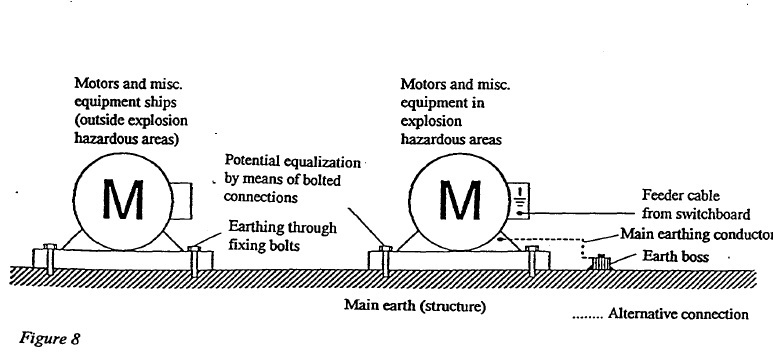Michael2009
Petroleum
- Jun 24, 2010
- 49
Hi Guys,
I encounter some of the plant/offshore engineering design for 3phase LV 480V motor earth terminal inside enclosure (terminal box) is connect directly to local ground (Structure). Instead to go back to main switchboard or MCC. Frame earth also to local earth (Structure).
But when I go through some Ex recommendation. for Explosion atmosphere requirement, Motor earth terminal inside terminal box require to earth direct to switchboard or MCC (4 wire for 3 phase, 3C + E). And motor frame is require to earth to direct local ground (Structure)
Which is correct actually?
some even do nothing with the earth terminal inside terminal box...
or all this is subject to earthing system designed?
thanks guys...

I encounter some of the plant/offshore engineering design for 3phase LV 480V motor earth terminal inside enclosure (terminal box) is connect directly to local ground (Structure). Instead to go back to main switchboard or MCC. Frame earth also to local earth (Structure).
But when I go through some Ex recommendation. for Explosion atmosphere requirement, Motor earth terminal inside terminal box require to earth direct to switchboard or MCC (4 wire for 3 phase, 3C + E). And motor frame is require to earth to direct local ground (Structure)
Which is correct actually?
some even do nothing with the earth terminal inside terminal box...
or all this is subject to earthing system designed?
thanks guys...

